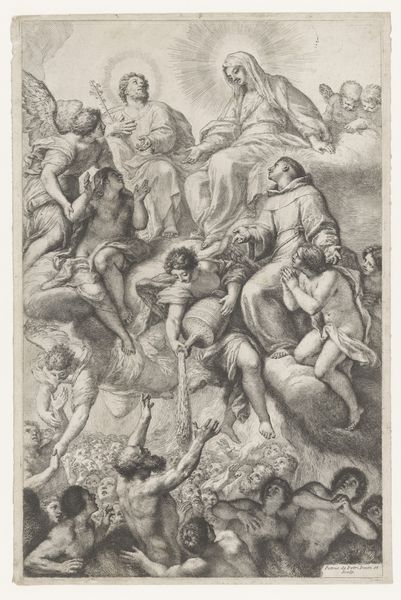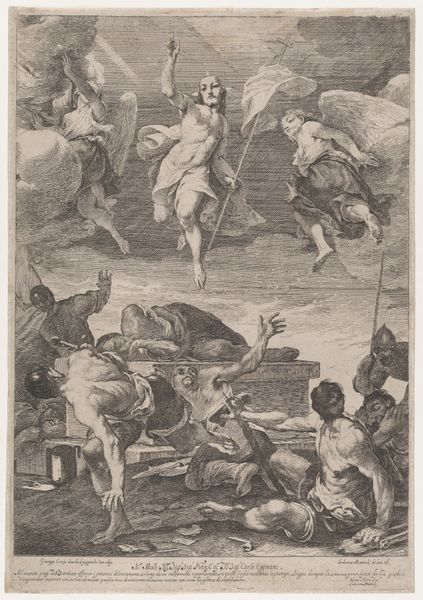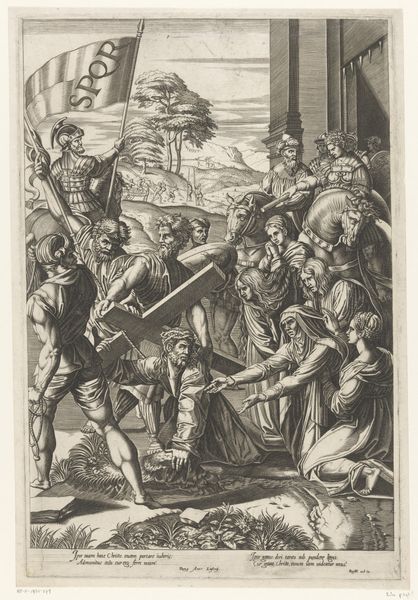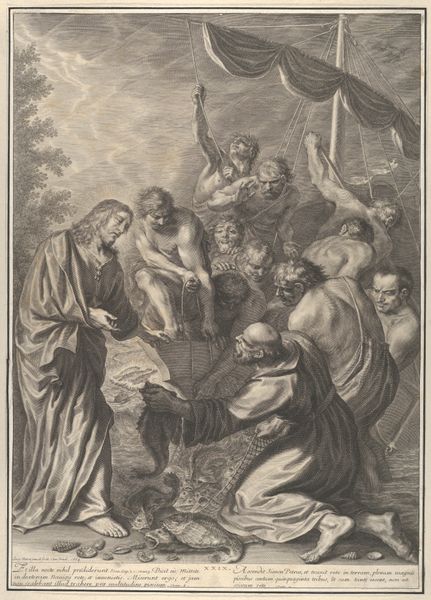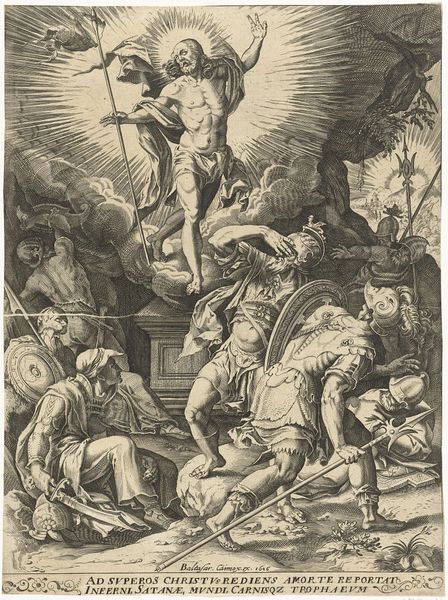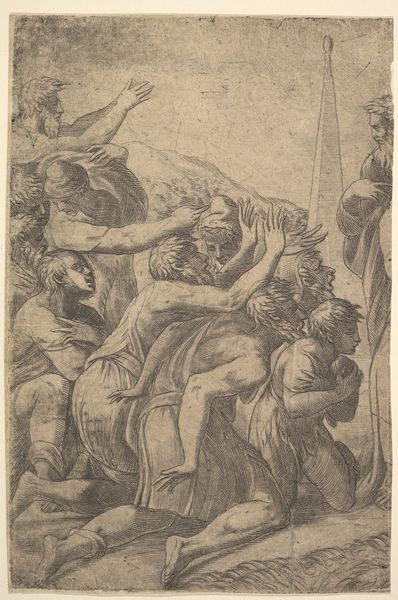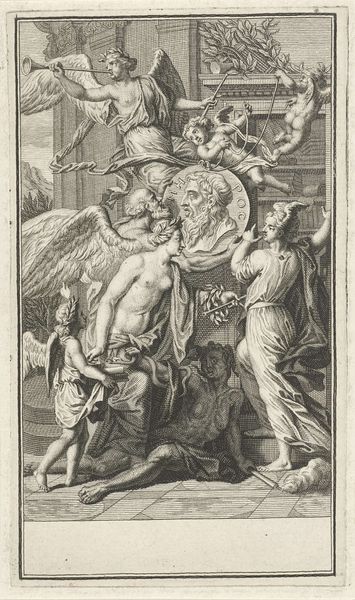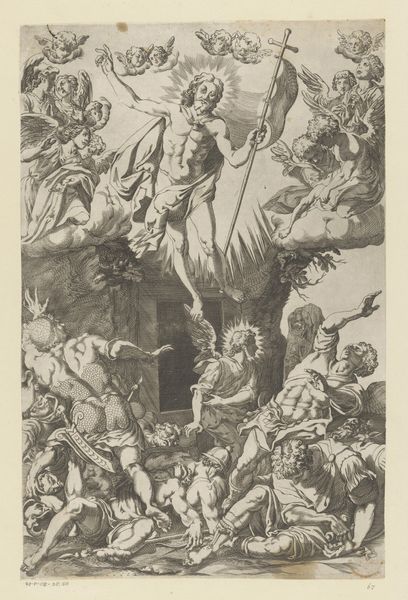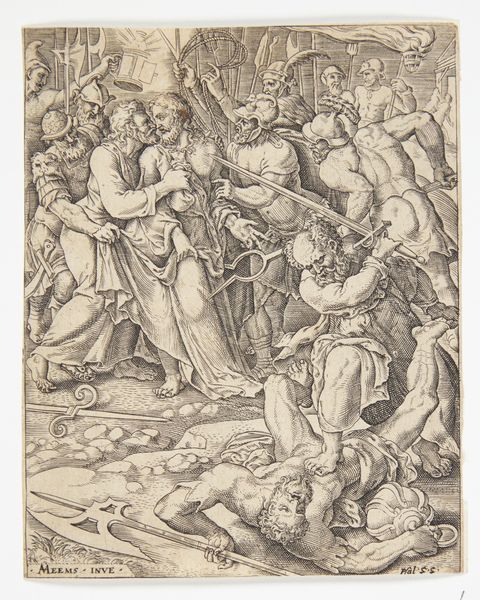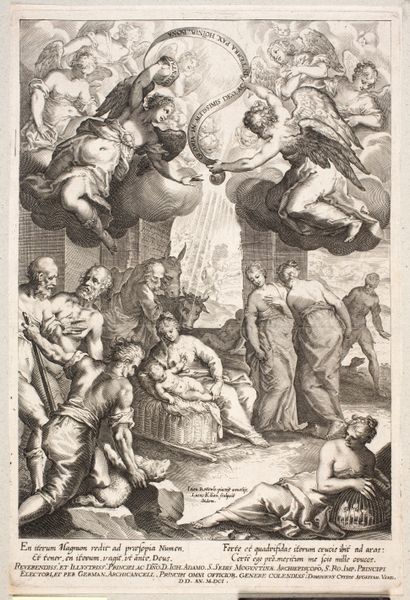
engraving
#
allegory
#
baroque
#
figuration
#
line
#
history-painting
#
engraving
Dimensions: height 339 mm, width 204 mm
Copyright: Rijks Museum: Open Domain
Curator: Standing before us is Pieter Tanjé's engraving, "Apotheosis of Heroes under the Reign of Minerva," created in 1743. It resides here at the Rijksmuseum. Editor: The baroque grandeur is evident right away. It's such a meticulously crafted print, teeming with allegorical figures. What stands out most is how densely populated the composition is. Curator: Indeed, Tanjé was working within very established conventions of history painting, typical of the era, aiming to present an idealized, virtuous vision of leadership and legacy. Editor: You can almost feel the weight of the press used to make this. It must have taken considerable skill and labor to achieve such fine lines. Looking closely, you can appreciate the precision involved in translating such a complex design into a reproducible image. The materiality of the engraving process really lends itself to a detailed rendering of the allegorical content. Curator: Exactly. The figure of Minerva, goddess of wisdom and strategic warfare, is central. She symbolizes enlightened rule, under which, as the title indicates, heroes are elevated and celebrated. It’s about constructing a specific narrative of power. Note the figures rising towards the heavens, indicating their apotheosis. It's all very calculated to project legitimacy. Editor: What gets me is the role the "hero" has. Were heroes elevated because of real deeds, or were heroic actions manufactured by social position? The means of making a hero is something that sits with me when considering an artwork of this sort. And is Minerva blessing heroism or reinforcing the heroic structure? Curator: Those are critical questions. The engraving format itself points to its dissemination among a specific audience –likely elite circles familiar with classical allegories. So its social impact comes down to reaffirming shared cultural values within a limited stratum. Editor: I keep coming back to the material process here: each impression becomes a commodity circulating amongst people who consume ideas, the heroic or elite or those seeking it, through carefully printed means. This is image-making with a purpose beyond just aesthetics, as is plain. Curator: A potent reminder of how art actively shaped socio-political perceptions in the 18th century, through very traditional channels of history. Editor: Ultimately, "Apotheosis" presents not just heroic acts, but the very manufacturing of heroism for consumption.
Comments
No comments
Be the first to comment and join the conversation on the ultimate creative platform.

